Tristan Tzara and the Jewish Roots of Dada, Part 1
The twentieth century saw a proliferation of art inspired by the culture of critique. The exposure and promotion of this art grew alongside the ever-expanding Jewish control of the media, and Jewish penetration and eventual capture of the Western art establishment. Jewish writers, painters and composers sought to rewrite the rules of artistic expression — to allow accommodation for their own technical limitations, and to facilitate the creation (and elite acceptance) of works intended as a rebuke to the supposed evils of Western civilizational norms.
The Jewish intellectual substructure of many of these twentieth century art movements was manifest in their unfailing hostility toward the political, cultural and religious traditions of Europe and European-derived societies. I previously examined how the rise of Abstract Expressionism exemplified this tendency in the United States, and coincided with the usurping of the American art establishment by a group of radical Jewish intellectuals. In Europe, Jewish influence on Western art reached a peak during the interwar years. This era, when the work of many artists was suffused with radical politics, was the heyday of the Jewish avant-garde.
A prominent example of a cultural movement from this time with important Jewish involvement was Dada. The Dadaists challenged the very foundations of Western civilization which they regarded, in the context of the destruction of World War I, and continuing anti-Semitism throughout Europe, as pathological. The artists and intellectuals of Dada responded to this socio-political diagnosis with assorted acts of cultural subversion. Dada was a movement that was destructive and nihilistic, irrational and absurdist, and which preached the overturning of every cultural tradition of the European past, including of rationality itself. The Dadaists “aimed to wipe the philosophical slate clean” and lead “the way to a new world order.”[i] While there were many non-Jews involved in Dada, the Jewish contribution was fundamental in shaping its intellectual tenor as a movement, for Dada was as much an attitude and way of thinking as a mode of artistic output.
In a recent article for The Jewish Daily Forward, Bill Holdsworth observes that Dada “was one of the most radical of the art movements to attack bourgeois society” and that at “the epicenter of what would become a distinctive movement… were Romanian Jews — notably Marcel and Georges Janco and Tristan Tzara — who were essential to the development of the Dada spirit.” For Menachem Wecker, the works of the Jewish Dadaists represented “not only the aesthetic responses of individuals opposed to the absurdity of war and fascism” but, invoking the well-worn light unto the nations theme, insists that they brought a “particularly Jewish perspective to the insistence on justice and what is now called tikkun olam.” Accordingly, for Wecker, “it hardly seems a coincidence that so many of the Dada artists were Jewish.”
Indeed it does seem hardly coincidental when we learn that Dada was a genuinely international event, not just because it operated across political frontiers, but because it consciously attacked patriotic nationalism. Dada sought to transcend national boundaries and protest against European nationalist ideologies, and within this community of artists in exile (a “double Diaspora” in the case of the Jewish Dadaists) what mattered most was the collective effort to articulate an attitude of revolt against European cultural conventions and institutional frameworks.
First and foremost, Dada wanted to accomplish “a great negative work of destruction.” Presaging the poststructuralists and deconstructionists of the sixties and seventies, they believed that the only hope for society “was to destroy those systems based on reason and logic and replace them with ones based on anarchy, the primitive and the irrational.”[ii] Robert Short notes that Dada stood for “exacerbated individualism, universal doubt and [an] aggressive iconoclasm” which sought to debunk the traditional Western “canons of reason, taste and hierarchy, of order and discipline in society, of rationally controlled inspiration in imaginative expression.”[iii]
Tristan Tzara and Zurich Dada
The man who effectively founded Dada was the Romanian Jewish poet Tristan Tzara (born Samuel Rosenstock in 1896). “Tristan Tzara” was the pseudonym he adopted in 1915 meaning “sad in my country” in French, German and Romanian, and which, according to Gale, was “a disguised protest at the discrimination against Jews in Romania.”[iv] It was Tzara who, through his writings, most notably The First Heavenly Adventure of Mr. Antipyrine (1916) and the Sept Manifestes Dada (Seven Dada Manifestos, 1924), laid the intellectual foundations of the movement.[v] Dickerman notes that Tzara’s Dadaist Manifesto of 1918, was “the most widely distributed of all Dada texts,” and “played a key role in articulating a Dadaist ethos around which a movement could cohere.”[vi]
In his book Dada East: The Romanians of Cabaret Voltaire, Tom Sandqvist points out that Tzara’s intellectual and spiritual background was infused with the Yiddish and Hassidic subcultures of his early twentieth century Moldavian homeland, and that these were of seminal importance in determining the artistic innovations he would institute as the leader of Dada. He links Tzara’s profound revolt against European social constraints directly to his Jewish identity, and to the fact that the Jewish population of Romania (and particularly in his native Moldavia) was subjected to pervasive anti-Semitism. Under Romanian law, the Rosenstocks, a family of prosperous timber merchants, were not fully emancipated. Many Russian Jews settled in Romanian Moldova following pogroms, where they lived as guests of the local Jews who only became Romanian citizens after the First World War (as a condition for peace set by Western powers). For Sandqvist, the treatment of Jews in Romania would inevitably have fuelled an attitude of revolt against the socio-political status quo in Tzara, and this was fully consistent with the anarchist impulses that he exhibited at the Cabaret Voltaire in Zurich and later in Paris.
Agreeing with this thesis, the ethnocentric Jewish poet and Dada historian, Andrei Codrescu, claims that the ubiquitous anti-Semitism suffered by Romanian Jews like Tzara extends into the present day, noting that: “The Rosenstocks were Jews in an anti-Semitic town that to this day (2007) does not list on its website the founder of Dada among the notables born there.” This is regarded as all the more egregious given that, despite its marginality, Tzara’s hometown Moineşti is, in Codrescu’s opinion, “the center of the modern world, not only because of Tristan Tzara’s invention of Dada, but because its Jews were among the first Zionists, and Moineşti itself was the starting point of a famous exodus of its people on foot from here to the land of dreams, E’retz-Israel.” For Codrescu, Tzara’s Jewish heritage was of profound importance in shaping his contribution to Dada.
The daddy of dada was welcomed at his bar mitzvah in 1910 into the Hassidic community of Moineşti-Bacau by the renowned rabbi Bezalel Zeev Safran, the father of the great Chief Rabbi Alexandre Safran, who saw the Jews of Romania through their darkest hour during the fascist regime and the Second World War. Sammy Rosenstock’s grandfather was the rabbi of Chernowitz, the birthplace of many brilliant Jewish writers, including Paul Celan and Elie Weisel [both of whom wrote about the Holocaust]. … Sammy’s father owned a saw-mill, and his grandfather lived on a large wooded estate, but his family roots were sunk deeply into the mud of the shtetl, a Jewish world turned deeply inward.[vii]
For Codrescu, Tzara was one of the many “shtetl escapees” who was “quick to see the possibility of revolution,” and became a leader within “the revolutionary avant-garde of the 20th century which was in large measure the work of provincial East European Jews.” Crucially for shaping the intellectual tenor of Dada, Tzara and the other Jewish exiles from Budapest like the Janco brothers “brought along, wrapped in refugee bundles, an inheritance of centuries of ‘otherness.’”[viii] This deep sense of “otherness” was rendered all the more politically and culturally potent given the “messianic streak [that] drove many Jews from within.” Codrescu notes that “By the time of Samuel’s birth in 1896, powerful currents of unrest were felt within the traditional Jewish community of Moineşti. The questions of identity, place and belonging, which had been asked innumerable times in Jewish history, needed answers again, 20th century answers.”[ix] In this need for answers lay the seeds of Dada as a post-Enlightenment (proto-postmodern) expression of Jewish ethnic politics.
While there is some controversy over who exactly invented the name “Dada,” most sources accept that Tristan Tzara hit upon the word (which means hobbyhorse in French) by opening a French-German dictionary at random. “Da-da” also means “yes, yes” in Romanian and Russian, and the early Dadaists reveled in the primal quality of its infantile sound, and its appropriateness as a symbol for “beginning Western civilization again at zero.” Crepaldi notes how the choice of the group’s name was “emblematic of their disillusionment and their attitude, deliberately shorn of values and logical references.”[x] Tzara seems to have recognized its propaganda value early on with the German Dadaist poet Richard Huelsenbeck recalling that Tzara “had been one of the first to grasp the suggestive power of the word Dada,” and developed it as a kind of brand identity.[xi]
Tzara’s own “Dadaist” poetry was marked by “extreme semantic and syntactic incoherence.”[xii] When he composed a Dada poem he would cut up newspaper articles into tiny fragments, shake them up in a bag, and scatter them across the table. As they fell, they made the poem; little further work was called for. With regard to such practices, the Jewish Dadaist painter and film-maker Hans Richter commented that “Chance appeared to us as a magical procedure by which we could transcend the barriers of causality and conscious volition, and by which the inner ear and eye became more acute. … For us chance was the ‘unconscious mind,’ which Freud had discovered in 1900.”[xiii] Codrescu speculates that Tzara’s aleatoric poetry had its likely intellectual and aesthetic wellspring in the mystical knowledge of his Hassidic heritage, where he was inspired by
the commentaries of other famous Kabbalists, like Rabbi Eliahu Cohen Itamari of Smyrna, who believed that the Bible was composed of an “incoherent mix of letters” on which order was imposed gradually by divine will according to various material phenomena, without any direct influence by the scribe or the copier. Any terrestrial phenomenon was capable of rearranging the cosmic alphabet toward cosmic harmony. A disciple of the Smyrna rabbi wrote, “If the believer keeps repeating daily, even one verse, he may obtain salvation because each day the order of the letters changes according to the state and importance of each moment.…”
An old midrashic commentary holds that repeating everyday even the most seemingly insignificant verse of the Torah has the effect of spreading the light of divinity (consciousness) as much as any other verse, even the ones held as “most important,” because each word of the Law participates in the creation of a “sound world,” superior to the material one, which it directs and organizes. This “sound world” is higher on the Sephiroth (the tree of life that connects the worlds of humans with God), closer to the unnamable, being illuminated by the divine. One doesn’t need to reach far to see that the belief in an autonomous antiworld made out of words is pure Dada. In Tzara’s words, “the light of a magic hard to seize and to address.”[xiv]
The fact that Tzara returned to study of the Kabbalah towards the end of his life certainly lends weight to Codrescu’s thesis. Finkelstein notes how Tzara’s poetry “sounds eerily like a Kabbalistic ritual rewritten as a Dadaist café performance,” and links Tzara’s Dada spirit to the influence of the seventeenth and eighteenth century Jewish heresies that were centered on the notion of “redemption through sin” which involves “the violation of Jewish law (sometimes to the point of apostasy) in the name of messianic transformation.” The Jewish American poet Jerome Rothenberg calls these heresies “libertarian movements” within Judaism and connects them to Jewish receptivity to the forces of secularization and modernity, leading in turn to the “critical role of Jews and ex-Jews in revolutionary politics (Marx, Trotsky etc.) and avant-garde poetics (Tzara, Kafka, Stein etc.)” For Rothenberg, there are “definite historical linkages between the transgressions of messianism and the transgressions of the avant-garde.”[xv] Heyd endorses Rothenberg’s thesis, observing that “Tzara uses terminology that is part and parcel of Judaic thinking and yet subjects these very concepts to his nihilistic attack.”[xvi] Perhaps not surprisingly, the Kabbalist and Surrealist author Marcel Avramescu, who wrote during the 1930s, was directly inspired by Tzara.
Nicholas Zarbrugg has written detailed studies of the ways that Dada fed into the sound and visual poetry of the first phase of postmodernism.[xvii] Tzara’s poetry was, for instance, to strongly influence the Absurdist drama of Samuel Beckett, and the poetry of Andrei Codrescu, Jerome Rothenberg, Isidore Isue, and William S. Burroughs. Allen Ginsberg, who encountered Tzara in Paris in 1961, was strongly influenced by Tzara. Codrescu relates that “A young Allen Ginsberg, seated in a Parisian café in 1961, saw a sober-looking, suited Tzara hurrying by, carrying a briefcase. Ginsburg called to him “Hey Tzara!” but Tzara didn’t so much as look at him, unsympathetic to the unkempt young Americans invading Paris again for cultural nourishment.” For Codrescu it was a minor tragedy that “the daddy of Dada failed to connect with the daddy of the vast youth movement that would revive, refine and renew Dada in the New World.”[xviii]
The Cabaret Voltaire
The Cabaret Voltaire was created by the German anarchist poet and pianist Hugo Ball in Zurich in 1916. Rented from its Jewish owner, Jan Ephraim, and with start-up funds provided by the Jewish patroness Käthe Brodnitz, the Cabaret was established in a seedy part of the city and intended as a place for entertainment and avant-garde culture, where music was played, artwork was exhibited, and poetry was recited. Some of this poetry was later published in the Cabaret’s periodical entitled Dada, which soon became Tristan Tzara’s responsibility. In it he propagated the principles of Dadaist derision, declaring that “Dada is using all its strength to establish the idiotic everywhere. Doing it deliberately. And is constantly tending towards idiocy itself. … The new artist protests; he no longer paints (this is only a symbolic and illusory reproduction).”[xix]
Evenings at the Cabaret Voltaire were eclectic affairs and “new music by Arnold Schoenberg and Alban Berg took its turn with readings from Jules Laforgue and Guillaume Apollinaire, demonstrations of ‘Negro dancing’ and a new play by Expressionist painter and playwright Oskar Kokoschka.”[xx] The inclusion of dance and music extended Dada activities into areas that allowed a total expression approaching the pre-war (originally Wagnerian) ideal of the Gesamtkunstwerk (combined art work). In time the tone of the acts “became more aggressive and violent, and a polemic against bourgeois drabness began to be heard.”[xxi] Performances sought to shock bourgeois attitudes and openly undermine spectator’s conventional templates for understanding culture. Thus, a June 1917 lecture “on modern art” was delivered by a lecturer who stripped off his clothes in front of the audience before being arrested and jailed for performing obscene acts in public.[xxii] Godfrey notes that “This was carnival at its most grotesque and extreme: all the taste and decorum that maintains polite society was overturned.”[xxiii] Wicks points out that:
The Dada scenes conveyed a feeling of chaos, fragmentation, assault on the senses, absurdity, frustration of ordinary norms, pastiche, spontaneity, and posed robotic mechanism. They were scenes from a madhouse, performed by a group of sane and reflective people who were expressing their decided anger and disgust at the world surrounding them.[xxiv]
The outrages committed by Dadaists attacking the traditions and preconceptions of Western art and literature were deliberately extreme and designed to shock, and this tactic extended beyond the Cabaret Voltaire to everyday gestures. For instance, Tzara, “the most demonic activist” of Dada, regularly appalled the dowagers of Zurich by asking them the way to the brothel. For Godfrey such gestures are redolent of the “propaganda of the deed” of the violent anarchists who, through their random bombings and assassinations of authority figures, sought to “show the rottenness of the system and to shock that system into crisis.”[xxv] Arnason likewise underscores the serious ideological intent behind these gestures, noting that: “From the very beginning, the Dadaists showed a seriousness of purpose and a search for a new vision and content that went beyond any frivolous desire to outrage the bourgeoisie. … The Zurich Dadaists were making a critical re-examination of the traditions, premises, rules, logical bases, even the concepts of order, coherence, and beauty that had guided the creation of the arts throughout history.”[xxvi] The doyen of the Frankfurt School, Walter Benjamin, spoke admiringly of Dada’s moral shock effects as anticipating the technical effects of film in the way that they “assail the spectator.”[xxvii]
The leadership of Zurich Dada soon passed from Hugo Ball to Tzara, who, in the process, “impressed upon it his negativity, his anti-artistic spirit and his profound nihilism.” Soon Ball could no longer identify with the movement and left, remarking: “I examined my conscience scrupulously, I could never welcome chaos”[xxviii] Moving to a small Swiss village, from 1920 he became increasingly removed from social and political life, returning to a devout Catholicism and plunging into a study of fifth and sixth century saints. Ball later embraced a form of German nationalism and was to label the Jews as “a secret diabolical force in German history,” and when analyzing the potential influence of the Russian Revolution on Germany, concluded that, “Marxism has little prospect of popularity in Germany as it is a ‘Jewish movement.’”[xxix] He clearly perceived the ethno-political agenda that motivated the vastly disproportionate Jewish leadership of the Bolshevik Revolution, and noting the make-up of the new Bolshevik Executive Committee, observed:
There are at least four Jews among the six men on the Executive Committee. There is certainly no objection to that; on the contrary, the Jews were oppressed in Russia too long and too cruelly. But apart from the honestly indifferent ideology they share and their programmatically material way of thinking, it would be strange if these men, who make decisions about expropriation and terror, did not feel old racial resentments against the Orthodox and pogrommatic Russia.[xxx]
Tzara, as Ball’s successor, quickly converted Ball’s persona as cabaret master of ceremonies into a role as a savvy media spokesman with grand ambitions. Tzara was “the romantic internationalist” wrote the Richard Huelsenbeck in his 1920 history of Dada, “whose propagandistic zeal we have to thank for the enormous growth of Dada.”[xxxi]
In addition to the Jewish mysticism of his Hassidic roots, Tzara was strongly influenced by the Italian Futurists, though, not surprisingly, he rejected the proto-Fascist stance of their leader Marinetti. By 1916, noted Hans Richter, Dada had replaced Futurism as the vanguard of modernism, and “we had swallowed Futurism—bones, feathers and all. It is true that in the process of digestion all sorts of bones and feathers had been regurgitated.”[xxxii] Nevertheless, the Dadaists’ intent was contrary to that of the Futurists, who extolled the machine world and saw in mechanization, revolution, and war the logical means, however brutal, to the solution of human problems. Dada was never widely popular in the birthplace of Futurism, although quite a few Italian poets did become Dadaists, including the poet, painter and future racial theorist Julius Evola, who became a personal friend of Tzara and initially took to Dada with unbridled enthusiasm. He eventually became disillusioned by Dada’s total rejection of European tradition, however, and began the search for an alternative, pursuing a path of philosophical speculation which later led him to esotericism and fascism.[xxxiii]
The entry of Romania into the war on the side of Britain, France, and Russia, on 28 August 1916 immediately transformed Tzara into a potential conscript. Gale relates that “In November Tzara was called for examination by a panel ascertaining fitness to fight. He successfully feigned mental instability and received a certificate to that effect.”[xxxiv] At this time, living across the street from the Cabaret Voltaire in Zurich were Lenin, Karl Radek and Gregory Zinoviev who were busy planning the Bolshevik Revolution. At some point between 1916 and 1917, Tzara is believed to have played chess in a coffeehouse frequented by Lenin, possibly with the Bolshevik leader himself.[xxxv]
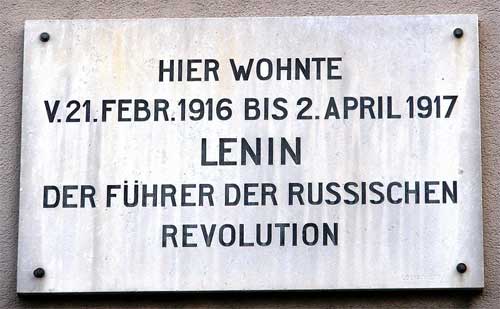
Sign outside 14 Spiegelgasse in Zurich where Lenin lived between 1916 and 1917 not far from the Cabaret Voltaire at 1 Spiegelgasse
After the November 1918 Armistice, Tzara and his colleagues began publishing a Dadaist journal called Der Zeltweg, aimed at popularizing Dada at time when Europe was reeling from the impact of the Bolshevik Revolution, the Spartacist uprising in Berlin, the communist insurrection in Bavaria, and, later, the proclaiming of the Hungarian Soviet Republic under Bela Kun. These events, observed Hans Richter, “had stirred men’s minds, divided men’s interests and diverted energies in the direction of political change.”[xxxvi] According to historian Robert Levy, Tzara around this time associated with a group of Romanian communist students, almost certainly including Ana Pauker, who later became the Romanian Communist Party’s Foreign Minister and one of its most prominent and ruthless Jewish functionaries.[xxxvii] Tzara’s poems from the period are stridently communist in orientation and, influenced by Freud and Wilhelm Reich, depict extreme revolutionary violence as a healthy means of human expression.[xxxviii]
Go to Part 2.
REFERENCES
Alexandrian, S. (1970) Surrealist, Thames & Hudson, London.
Armstrong, A. & Cardinal R. (2002) ‘Tzara, Tristan’, In: Justin Wintle (ed.), Makers of Modern Culture, Routledge, London.
Arnason, H.H. (1986) A History of Modern Art, Thames & Hudson, London.
Beitchman, P. (1988) I Am a Process with No Subject, University of Florida Press, Gainesville.
Boime, A. (2010) ‘Dada’s Dark Secret,’ In: Washton-Long, Baigel & Heyd (Eds.) Jewish Dimensions in Modern Visual Culture: Anti-Semitism, Assimilation, Affirmation, Brandeis University Press.
Codrescu, A. (2009) The Posthuman Dada Guide: tzara and lenin play chess, Princeton University Press.
Crepaldi, G. (2007) Modern Art 1900-1945 – The Age of the Avant-Gardes, HarperCollins, London.
Dempsey, A. (2002) Styles, Schools and Movements – An Encylopaedic Guide to Modern Art, Thames & Hudson, London.
Dickerman, L. (2005) ‘Introduction & Zurich,’ In Dada Ed. By Leah Dickerman, Dada, National Gallery of Art, Washington D.C.
Finkelstein, N. (2001) Not One of Them in Place and Jewish American Identity (SUNY Series in Modern Jewish Literature and Culture), State University of New York Press, New York.
Gale, M. (2004) Dada & Surrealism, Phaidon, London.
Godfrey, T. (1998) Conceptual Art, Phaidon, London.
Heyd, M. (2010) ‘Tristan Tzara/Shmuel Rosenstock: The Hidden/Overt Jewish Agenda,’ In: Washton-Long, Baigel & Heyd (Eds.) Jewish Dimensions in Modern Visual Culture: Anti-Semitism, Assimilation, Affirmation, Brandeis University Press.
Holdsworth, B. (2011) ‘Forgotten Jewish Dada-ists Get Their Due,’ The Jewish Daily Forward, September 22, View at: http://forward.com/articles/143160/#ixzz1ZRAUpOoX
Levy, R. (2001) Ana Pauker: The Rise and Fall of a Jewish Communist, University of California Press, Berkeley.
Richter, H. (2004) Dada. Art and Anti-art, Thames & Hudson, London & New York.
Russell, J. (1981) The Meanings of Modern Art, Thames & Hudson, London.
Sandqvist, T. (2006) Dada East: The Romanians of Cabaret Voltaire, MIT Press, Cambridge.
Schnapp, J.T. (2006) ‘The Dada revolution’ In: Art of the Twentieth Century – 1900-1919 The Avant-garde Movements, Skira, Italy.
Short, R. (1994) Dada and Surrealism, Laurence King Publishing, London.
Wecker, M. (2006) ‘Eight Dada Jewish Artists,’ The Jewish Press, August 30. View at: http://www.jewishpress.com/printArticle.cfm?contentid=19293
Wicks, Robert .J. (2003) Modern French Philosophy: From Existentialism to Postmodernism, Oneworld.
Zurbrugg, N. & Burt, G. (2000) Critical Vices: The Myths of Postmodern Theory, OPA, Amsterdam.
ENDNOTES
[i] Wecker
[ii] Dempsey p. 115
[iii] Short p. 7
[iv] Gale p. 46
[v] Wecker
[vi] Dickerman p. 10
[vii] Codrescu p. 209
[viii] Ibid. p. 173
[ix] Ibid.
[x] Crepaldi p. 194
[xi] Dickerman p. 33
[xii] Armstrong & Cardinal p. 530
[xiii] Russell p. 179
[xiv] Codrescu p. 213
[xv] Finkelstein p. 100
[xvi] Heyd p. 213
[xvii] See, for example, Zurbrugg & Burt
[xviii] Codrescu p. 212
[xix] Alexandrian p. 30-31
[xx] Russell p. 182
[xxi] Schnapp p. 392
[xxii] Ibid. p. 389
[xxiii] Godfrey p. 41
[xxiv] Wicks p. 10
[xxv][xxv] Godfrey p. 40
[xxvi] Arnason, p. 224
[xxvii] Dickerman p. 9
[xxviii] Schnapp p. 396
[xxix] Boime p. 98 & 95-96
[xxx] Ibid. p. 96
[xxxi] Dickerman p. 35
[xxxii] Richter p. 33
[xxxiii] Gale p. 80
[xxxiv] Ibid. p. 56
[xxxv] Codrescu p. 11
[xxxvi] Richter p. 80
[xxxvii] Levy p. 37
[xxxviii] Beitchman p. 37-42
ENDNOTES
[1] Wecker
[1] Dempsey p. 115
[1] Short p. 7
[1] Gale p. 46
[1] Wecker
[1] Dickerman p. 10
[1] Codrescu p. 209
[1] Ibid. p. 173
[1] Ibid.
[1] Crepaldi p. 194
[1] Dickerman p. 33
[1] Armstrong & Cardinal p. 530
[1] Russell p. 179
[1] Codrescu p. 213
[1] Finkelstein p. 100
[1] Heyd p. 213
[1] See, for example, Zurbrugg & Burt
[1] Codrescu p. 212
[1] Alexandrian p. 30-31
[1] Russell p. 182
[1] Schnapp p. 392
[1] Ibid. p. 389
[1] Godfrey p. 41
[1] Wicks p. 10
[1][1] Godfrey p. 40
[1] Arnason, p. 224
[1] Dickerman p. 9
[1] Schnapp p. 396
[1] Boime p. 98 & 95-96
[1] Ibid. p. 96
[1] Dickerman p. 35
[1] Richter p. 33
[1] Gale p. 80
[1] Ibid. p. 56
[1] Codrescu p. 11
[1] Richter p. 80
[1] Levy p. 37
[1] Beitchman p. 37-42

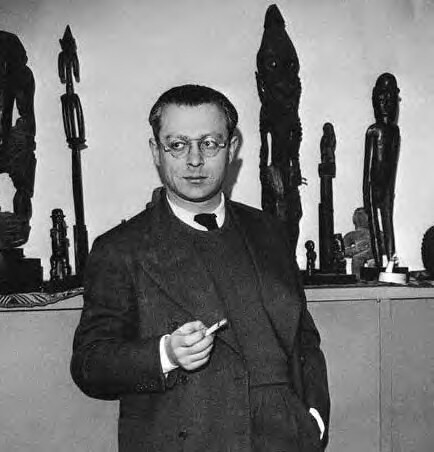
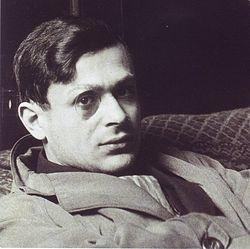
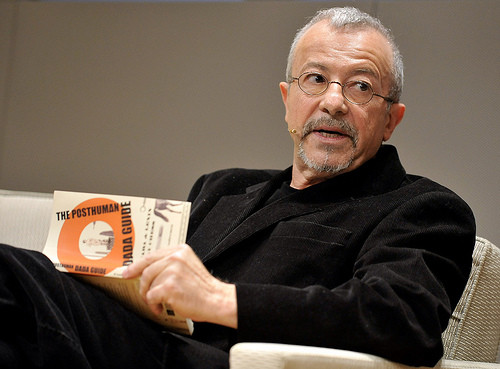
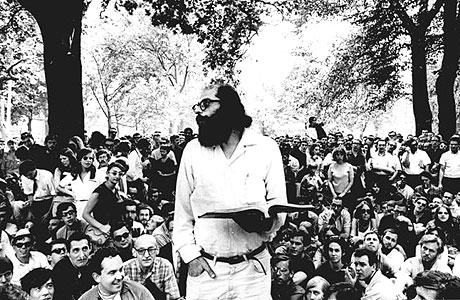
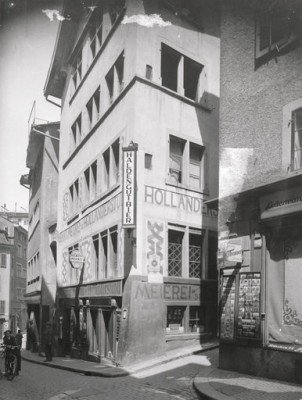
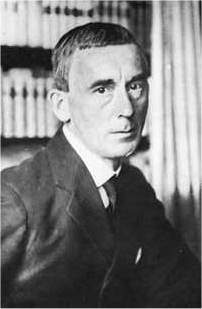




Comments are closed.